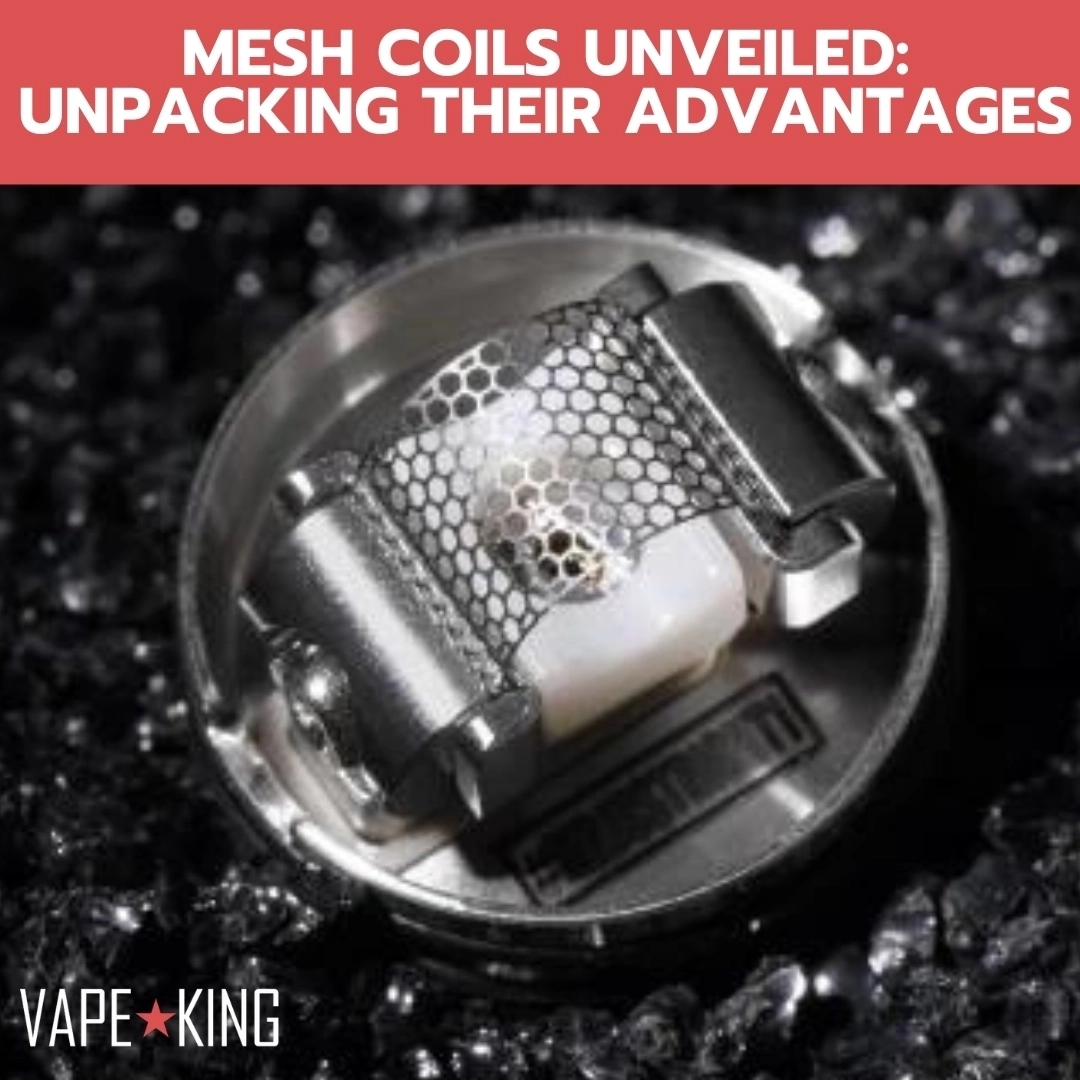Free Shipping on orders R1000 or more!
Mesh Coils Unveiled: Unpacking Their Advantages

Every so often, the vaping industry witnesses the emergence of groundbreaking technology that sends ripples through its core. Lately, the spotlight has undeniably been on mesh vape coils. Whether you're scouting for a new vape tank or immersed in the latest gear reviews, the ubiquity of mesh coils is unmistakable. But what exactly do mesh coils entail, and what perks do they bring to the table? Should your next vape tank boast a mesh coil?
In succinct terms, we're enthusiastic proponents of mesh coils at Innokin, incorporating them into the majority of our latest vape tanks. Mesh coils offer versatility, catering to various vaping scenarios, and we're confident that experiencing a mesh coil tank will leave you impressed. For a more in-depth exploration, read on to dive into the intricacies of mesh vape coils and gain expertise in this domain!
Decoding Mesh Coils
- To comprehend the essence of a mesh coil, a fundamental understanding of how traditional vape coils function is crucial. Before the advent of mesh coils, all vape coils operated on a similar premise. In a conventional vape coil, the heating wire, wound into a spiral shape, was the component responsible for vaporizing the e-liquid. The term "atomizer coil" was commonly used due to the coil-like nature of the heating wire.
- Mesh coils take a departure from this norm by not being constructed from wires. Instead, a mesh coil employs a mesh strip resembling a window screen. Typically wound into a compact cylinder and vertically installed to facilitate smooth airflow, high-end mesh vape coils might utilize multiple mesh strips working concurrently to enhance vapor production. The pivotal distinction lies in the heating surface – a mesh strip instead of a length of twisted wire.
The implications for you, the user, are likely to be profound.
The Genesis of Mesh Vape Coils
- Mesh coils emerged as a response to a stagnation point reached by traditional vape coils. Enthusiasts seeking voluminous vapor clouds and robust flavors from high-end vape tanks demanded increased coil surface areas. Traditional coils met this demand by using larger wire gauges and additional wires, resulting in coils requiring around 100 watts for efficient operation. Unfortunately, these coils often produced a subpar experience with loud pops and e-liquid spitting issues. A new type of vape coil was imperative to satiate cloud chasers, and the mesh coil emerged as the much-needed technological breakthrough.
Benefits of Mesh Coils
Mesh coils present two critical advantages compared to their traditional counterparts: enhanced wick-to-wire contact and increased surface area. Let's explore how these benefits translate into a superior vaping experience.
- Improved Wick-to-Wire Contact:
The flat profile of mesh coils allows for firm and uniform contact with the wick, eliminating areas where e-liquid can accumulate. This results in a nearly silent operation without the occasional pops or spitting associated with traditional vape coils. The even heating of mesh coils often contributes to extended coil longevity. - Greater Surface Area:
Mesh coils boast a large surface area, a boon for cloud production. Despite their reasonable wattage requirements, the low mass of mesh coils enables substantial vapor clouds. This efficiency ensures that a single-battery vape mod can rival the vapor production previously achievable only with a dual-battery mod. Switching to a tank with a mesh coil also tends to enhance your mod's battery life.
Potential Drawbacks of Mesh Coils
While the majority of vapers find mesh vape coils to be a significant improvement over traditional coils, there are instances where some may prefer the latter. Here are two potential reasons:
- Dry Vapor Sensation:
Mesh coils produce vapor with small and consistent droplet sizes, resulting in a somewhat "dry" sensation in the mouth. If you appreciate vapor with larger droplet sizes and a "wetter" character, traditional wound vape coils might be more to your liking. - Overwhelming Vapor Production:
Due to the substantial vapor clouds produced by mesh coils, the experience may be overwhelming for users employing high-nicotine e-liquids. While switching to lower-nicotine e-liquids can mitigate this effect, it might not suit those content with their current higher nicotine strength.
In conclusion, the introduction of mesh vape coils has marked a significant advancement in vaping technology. While their benefits, such as improved wick-to-wire contact and enhanced surface area, are widely acknowledged, some vapers may find the resulting dry vapor sensation or overwhelming vapor production less preferable. As with any technological shift, personal preferences play a crucial role, and exploring both mesh and traditional coils allows users to make informed decisions based on their unique needs and vaping preferences.
No posts found
Write a review

